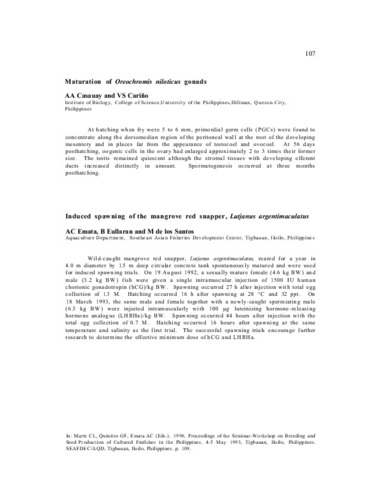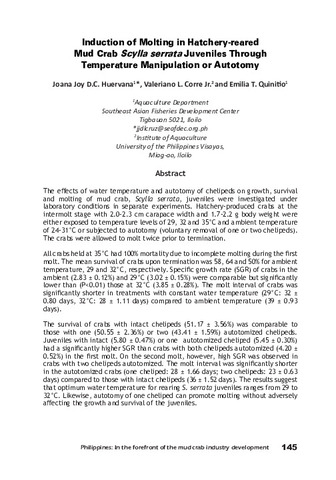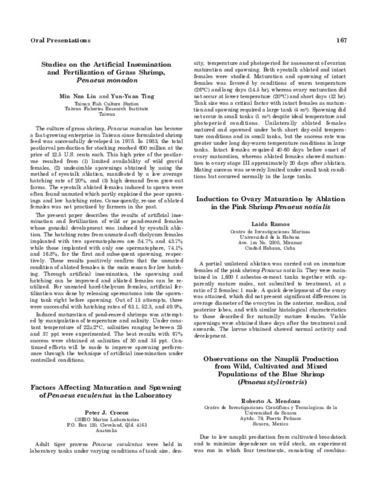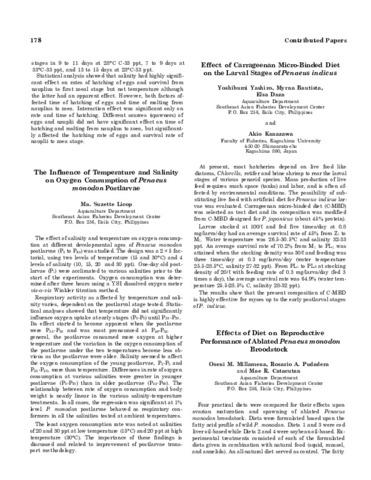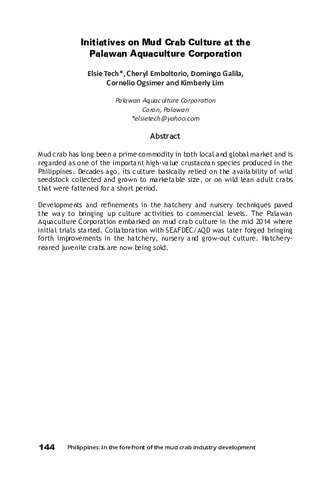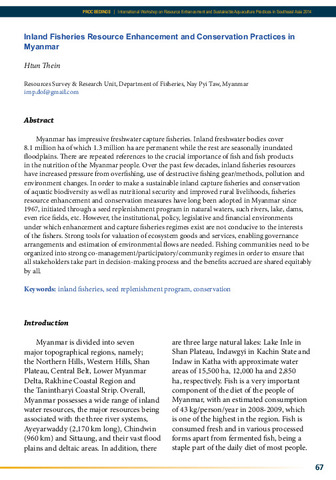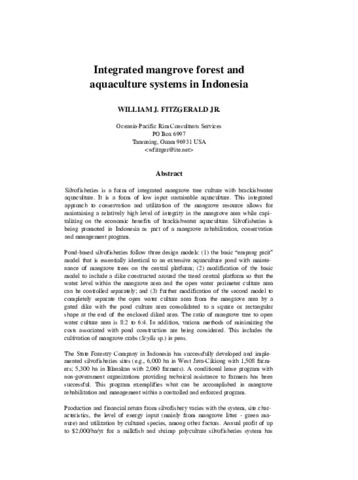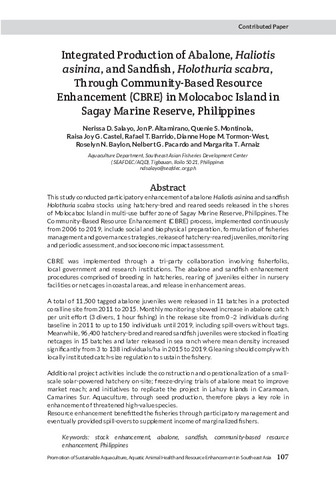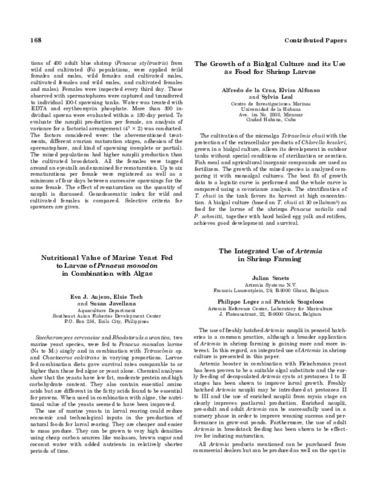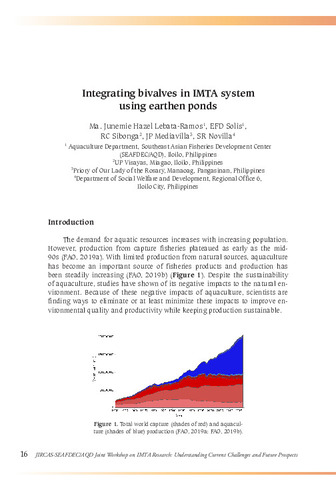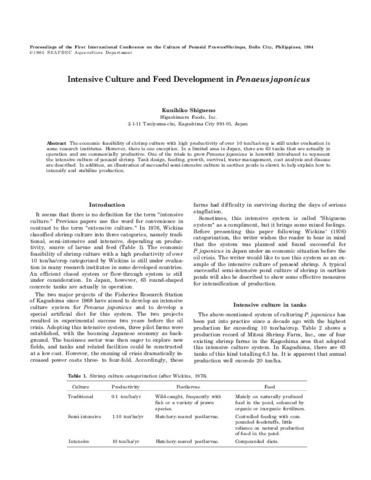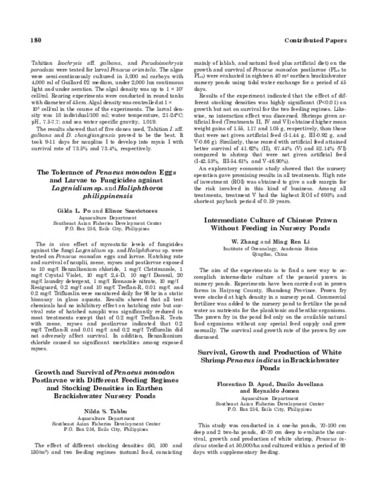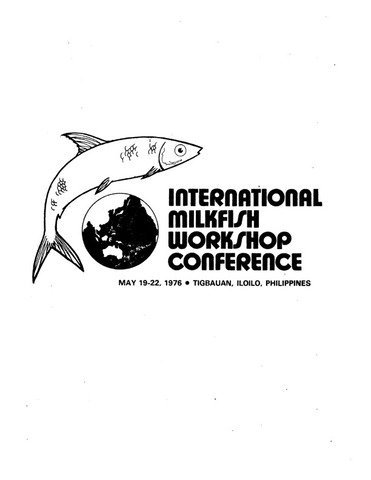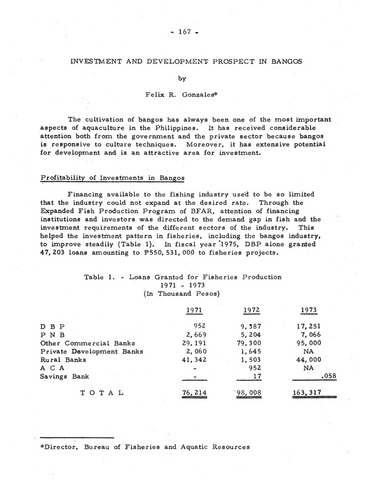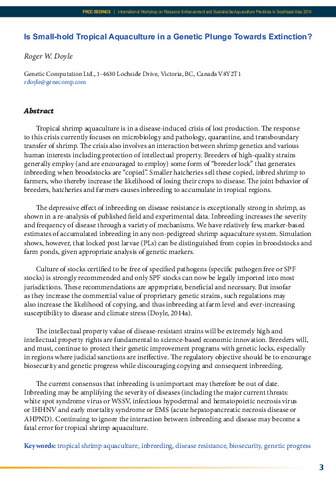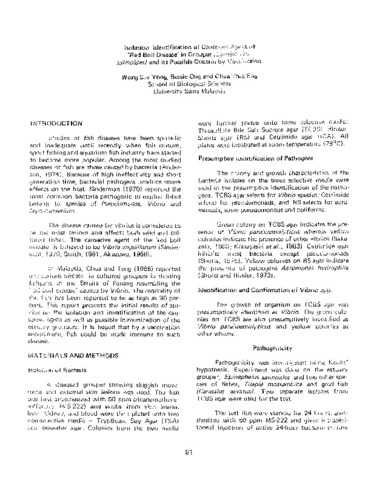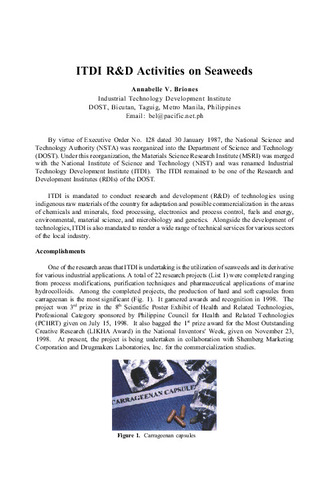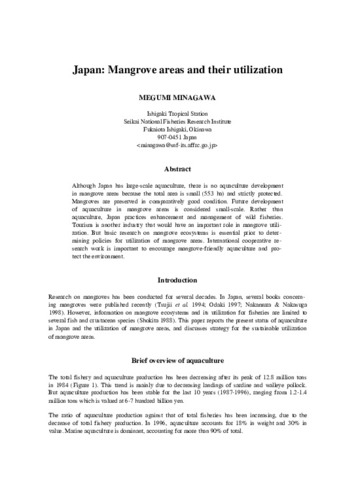Browsing Conference Proceedings by Title
Now showing items 324-343 of 767
-
Induced spawning of the mangrove red snapper, Lutjanus argentimaculatus
(Aquaculture Department, Southeast Asian Fisheries Development Center, 1996)Wild-caught mangrove red snapper, Lutjanus argentimaculatus, reared for a year in 4.0 m diameter by 1.5 m deep circular concrete tank spontaneously matured and were used for induced spawning trials. On 19 August 1992, a ... -
Induction of molting in hatchery-reared mud crab Scylla serrata juveniles through temperature manipulation or autotomy
(Aquaculture Department, Southeast Asian Fisheries Development Center, 2017)The effects of water temperature and autotomy of chelipeds on growth, survival and molting of mud crab, Scylla serrata, juveniles were investigated under laboratory conditions in separate experiments. Hatchery-produced ... -
Induction to ovary maturation by ablation in the pink shrimp Penaeus notialis
(Aquaculture Department, Southeast Asian Fisheries Development Center, 1985)A partial unilateral ablation was carried out on immature females of the pink shrimp Penaeus notialis. They were maintained in 1,600 ℓ asbestos-cement tanks together with apparently mature males, not submitted to ... -
Influence of LHRHa and methyltestosterone on milt production of sea bass Lates calcarifer (Bloch)
(Aquaculture Department, Southeast Asian Fisheries Development Center, 1996)Milt volume, sperm density, and number of spermatozoa were determined to quantify milt production of mature sea bass after a single injection of LHRHa [(D-Ala6,Pro9-N-ethylamiide)LHRH] in saline solution and 17α-methyltestosterone ... -
The influence of temperature and salinity on oxygen consumption of Penaeus monodon postlarvae
(Aquaculture Department, Southeast Asian Fisheries Development Center, 1985)The effect of salinity and temperature on oxygen consumption at different developmental ages of Penaeus monodon postlarvae (P5 to P60) was studied. The design was a 2 × 5 factorial, using two levels of temperature (15 and ... -
Initiatives on mud crab culture at the Palawan Aquaculture Corporation
(Aquaculture Department, Southeast Asian Fisheries Development Center, 2017)Mud crab (Scylla spp) has long been a prime commodity in both local and global market and is regarded as one of the important high-value crustacean species produced in the Philippines. Decades ago, its culture basically ... -
Inland fisheries resource enhancement and conservation practices in Myanmar
(Aquaculture Department, Southeast Asian Fisheries Development Center, 2015)Myanmar has impressive freshwater capture fisheries. Inland freshwater bodies cover 8.1 million ha of which 1.3 million ha are permanent while the rest are seasonally inundated floodplains. There are repeated references ... -
Integrated mangrove forest and aquaculture systems in Indonesia
(Aquaculture Department, Southeast Asian Fisheries Development Center, 2000)Silvofisheries is a form of integrated mangrove tree culture with brackishwater aquaculture. It is a form of low input sustainable aquaculture. This integrated approach to conservation and utilization of the mangrove ... -
Integrated production of abalone, Haliotis asinina, and sandfish, Holothuria scabra, through Community-Based Resource Enhancement (CBRE) in Molocaboc Island in Sagay Marine Reserve, Philippines
(Aquaculture Department, Southeast Asian Fisheries Development Center, 2021-12)This study conducted participatory enhancement of abalone Haliotis asinina and sandfish Holothuria scabra stocks using hatchery-bred and reared seeds released in the shores of Molocaboc Island in multi-use buffer zone of ... -
The integrated use of artemia in shrimp farming
(Aquaculture Department, Southeast Asian Fisheries Development Center, 1985)The use of freshly hatched Artemia nauplii in penaeid hatcheries is a common practice, although a broader application of Artemia in shrimp farming is gaining more and more interest. In this regard, an integrated use of ... -
Integrating bivalves in IMTA system using earthen ponds
(Aquaculture Department, Southeast Asian Fisheries Development Center; Japan International Research Center for Agricultural Sciences, 2022-07)This study aimed to integrate the mangrove clam Anodontia philippiana, which has the capacity to assimilate sulfide in a pond culture system with milkfish Chanos chanos and seaweeds Gracilariopsis heteroclada. Specifically, ... -
Integration of finfish in shrimp (Penaeus monodon) culture: an effective disease prevention strategy
(Aquaculture Department, Southeast Asian Fisheries Development Center, 2002)A farm trial on integration of finfish (i.e., tilapia) in shrimp (Penaeus monodon) culture was conducted in Negros Occidental, Philippines to prevent luminous vibriosis in shrimp. The farm engaged in shrimp monoculture ... -
Intensive culture and feed development in Penaeus japonicus
(Aquaculture Department, Southeast Asian Fisheries Development Center, 1985)The economic feasibility of shrimp culture with high productivity of over 10 ton/ha/crop is still under evaluation in some research institutes. However, there is one exception. In a limited area in Japan, there are 63 tanks ... -
Intermediate culture of chinese prawn without feeding in nursery ponds
(Aquaculture Department, Southeast Asian Fisheries Development Center, 1985)The aim of the experiments is to find a new way to accomplish intermediate culture of the penaeid prawn in nursery ponds. Experiments have been carried out in prawn farms in Haiyang County, Shandong Province. Prawn fry ... -
International Milkfish Workshop Conference, May 19-22, 1976, Tigbauan, Iloilo, Philippines
(Aquaculture Department, Southeast Asian Fisheries Development Center, 1976) -
Is small-hold tropical aquaculture in a genetic plunge towards extinction?
(Aquaculture Department, Southeast Asian Fisheries Development Center, 2015)Tropical shrimp aquaculture is in a disease-induced crisis of lost production. The response to this crisis currently focuses on microbiology and pathology, quarantine, and transboundary transfer of shrimp. The crisis also ... -
Isolation, identification of causative agent of "red boil disease" in grouper (Epinephelus salmoides) and its possible control by vaccination
(Aquaculture Department, Southeast Asian Fisheries Development Center; International Development Research Centre, 1979)This report presents the initial results of studies on the isolation and identification of the causative agent as well as possible immunization of the estuary groupers. It is hoped that by a vaccination programme, fish ... -
ITDI R&D activities on seaweeds
(Aquaculture Department, Southeast Asian Fisheries Development Center, 2002) -
Japan: Mangrove areas and their utilization
(Aquaculture Department, Southeast Asian Fisheries Development Center, 2000)Although Japan has large-scale aquaculture, there is no aquaculture development in mangrove areas because the total area is small (553 ha) and strictly protected. Mangroves are preserved in comparatively good condition. ...

